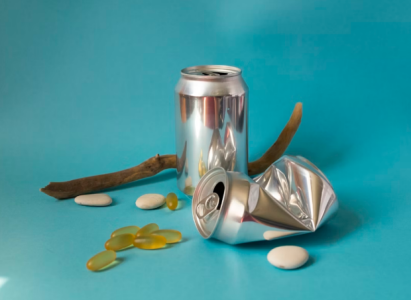Found a recalled product in your kitchen? Avoid these mistakes
- Replies 0
Hearing about a food recall can be unsettling, especially when it involves items you’ve recently purchased or already eaten.
Many people aren’t sure what the safest course of action is, and that uncertainty can lead to risky decisions.
Food safety experts stress that the way you respond to a recall can make all the difference in protecting yourself and others.
By understanding the most common errors and how to avoid them, you can handle these situations calmly and effectively.
The first mistake is reacting before confirming the facts. While headlines about recalls can cause immediate alarm, they rarely apply to every product on the market.
Most recalls are limited to specific batches, production dates, or distribution areas, and this information is clearly outlined in official notices.
Always compare the brand name, UPC code, lot number, and dates with what you have at home before taking any action.
Another serious error is ignoring a recall altogether. Even if you feel fine after eating some of the product, symptoms from contamination can take time to appear, and certain pathogens or allergens can be especially dangerous.

The safest choice is to follow the recall instructions exactly as stated by agencies like the USDA, FDA, or CDC.
This often includes returning the product, disposing of it safely, and cleaning any surfaces or utensils it touched with a proper sanitizing solution.
Testing a recalled product “just to see” is another common yet dangerous mistake. Many harmful bacteria and allergens cannot be detected by taste, smell, or appearance.
Even a small bite or exposure can trigger illness or a severe allergic reaction. If the recall notice says not to consume the product, keep it sealed and follow the official guidance for returning or disposing of it.
Also read: Are you using the wrong mosquito repellent? Only two things actually work
Throwing a recalled product straight in the trash without precautions can also pose risks. Some contaminated foods may harm pets, wildlife, or sanitation workers if improperly discarded.
Follow the disposal instructions provided in the recall, which might involve double-bagging or returning the item to the store.
Never donate or give away recalled food, even if the issue seems minor or doesn’t affect you personally.
Finally, a surprisingly large number of people overlook or simply fail to take full advantage of the refunds, exchanges, or replacements that are often made available when a recall is announced, even though they may be entitled to them.
Also read: Bloated, gassy, and over 60? These 11 surprising triggers might be why—and what you can do about it
In a time when grocery prices continue to climb steadily, most retailers are still willing to process a refund or offer a replacement if you can bring in the product itself, the original packaging, or even just a valid receipt showing the purchase.
Taking this extra step also plays an important role in helping stores formally document the recall process and ensure that any affected items still lingering on shelves are identified and removed.
By seeing the process through from start to finish, you are not only safeguarding your own well-being and financial interests, but also contributing to the protection of your broader community.
Read next: What to do if your email gets hacked—and how to lock it down for good

Have you ever had to respond to a food recall? Did you follow all the official instructions, or did you learn a lesson the hard way? Share your experience in the comments and help others stay informed.
Many people aren’t sure what the safest course of action is, and that uncertainty can lead to risky decisions.
Food safety experts stress that the way you respond to a recall can make all the difference in protecting yourself and others.
By understanding the most common errors and how to avoid them, you can handle these situations calmly and effectively.
The first mistake is reacting before confirming the facts. While headlines about recalls can cause immediate alarm, they rarely apply to every product on the market.
Most recalls are limited to specific batches, production dates, or distribution areas, and this information is clearly outlined in official notices.
Always compare the brand name, UPC code, lot number, and dates with what you have at home before taking any action.
Another serious error is ignoring a recall altogether. Even if you feel fine after eating some of the product, symptoms from contamination can take time to appear, and certain pathogens or allergens can be especially dangerous.

Found a recalled product in your kitchen? Avoid these mistakes. Image source: Mykola Kolya Korzh / Unsplash
The safest choice is to follow the recall instructions exactly as stated by agencies like the USDA, FDA, or CDC.
This often includes returning the product, disposing of it safely, and cleaning any surfaces or utensils it touched with a proper sanitizing solution.
Testing a recalled product “just to see” is another common yet dangerous mistake. Many harmful bacteria and allergens cannot be detected by taste, smell, or appearance.
Even a small bite or exposure can trigger illness or a severe allergic reaction. If the recall notice says not to consume the product, keep it sealed and follow the official guidance for returning or disposing of it.
Also read: Are you using the wrong mosquito repellent? Only two things actually work
Throwing a recalled product straight in the trash without precautions can also pose risks. Some contaminated foods may harm pets, wildlife, or sanitation workers if improperly discarded.
Follow the disposal instructions provided in the recall, which might involve double-bagging or returning the item to the store.
Never donate or give away recalled food, even if the issue seems minor or doesn’t affect you personally.
Finally, a surprisingly large number of people overlook or simply fail to take full advantage of the refunds, exchanges, or replacements that are often made available when a recall is announced, even though they may be entitled to them.
Also read: Bloated, gassy, and over 60? These 11 surprising triggers might be why—and what you can do about it
In a time when grocery prices continue to climb steadily, most retailers are still willing to process a refund or offer a replacement if you can bring in the product itself, the original packaging, or even just a valid receipt showing the purchase.
Taking this extra step also plays an important role in helping stores formally document the recall process and ensure that any affected items still lingering on shelves are identified and removed.
By seeing the process through from start to finish, you are not only safeguarding your own well-being and financial interests, but also contributing to the protection of your broader community.
Read next: What to do if your email gets hacked—and how to lock it down for good
Key Takeaways
- Always confirm recall details before discarding or returning a product.
- Never ignore a recall, even if you’ve already eaten the food and feel fine.
- Do not taste, smell, or test recalled products.
- Dispose of recalled food exactly as instructed to avoid harm to others.






